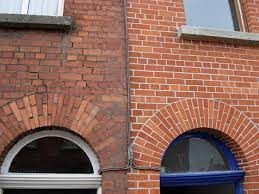The house owner and the plasterers in Melbourne will more often than not choose in advance what styles they will use in the house. Ordinarily dividers are smooth. Typically a mortgage holder will select to have roofs utilize a “surface” procedure as it is lesser demanding, quicker and less expensive than a smooth roof.

•Scratching
The main thing the plasterer has a tendency to do is go over all the work taped creases of the dividers he is going to cover; in a thin swatch. The wallboard coaxes dampness out of this strip, so when the plasterer goes over it again while doing what is left of the divider, it won’t leave an indented crease.
•Laying on
From the blend table the plasterer scoop some “mud” onto the focal point of his peddle with their trowels. Holding the trowel, the plasterer scoops a swelling move of mortar onto his trowel. This takes a touch of practice to ace, particularly with soupy blends.
•Knocking down
It depends upon the setting time of the mortar. Once the dampness of the mortar begins to be drawn by the board a second pass is made. This is called thumping down. It is similar to applying paint with a roller in wrist activity and reason. Almost no weight is connected and the trowel is kept level towards the divider.
•Setting
Here and there a quickening agent will be added to a blend by plasterers in Melbourne to rush the time delay from the underlying blending stage to when the mortar begins to set. This is ordinarily done on icy days when setting is postponed.
Textured
Normally an impeding operator is added to the blend. This is Cream of Tartar (or “Dope” in the plasterer’s language) and care must be brought with the sum included. A lot of and the blend may never set by any means. However, the sum utilized is frequently assessed. Retardant is included so that bigger blends can be made, since the surface system doesn’t require the individual to hold up until it begins to set.
Sponge
The wipe (actually called a buoy), has a circle frame and unpleasant surface. it is altered to a support with a focal handhold and is generally the span of a standard trowel. Wipe is a variation surface strategy and utilized typically on roofs and once in a while in storage rooms. Normally when utilizing a wipe; sand is added to the blend and the method is called sand-wipe.
Ceilings
Stilts are regularly required to mortar most roofs and are commonly harder to lay-on than dividers. For short roofs one can likewise work with drain containers. The trouble of working topsy turvy brings mortar bombs splattering on the floors, dividers and individuals underneath.
